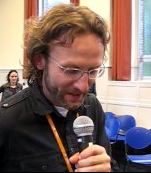I believe in treating adults as adults. That doesn’t mean I, as a facilitator, cannot be inspired by techniques teachers use with children in their classrooms, right?
Here are a few inspirations from Karen Moler of FlamingoFabulous in 2nd Grade. Facilitators, be inspired! And see if any of Karen’s challenges show up for you working with adults!
Here is a tool I use in my classroom to “randomly” partner my students up for activities. I love giving students the opportunity to choose their own partners but there are always a few who just can’t work together well but insist on doing it anyway. I also pass out cards and find the match to find their partner from time to time. But sometimes you need a quick way to ensure that your students are paired up academically or according to behavior. Soooo…. I created the partner wheel.
via Flamingo Fabulous in Second Grade: More Behavior Management and Freebie!.
And more http://flamingofabulous.blogspot.com/search/label/Behavior
Usually, I have the “turn to your elbow buddy” or use the partner wheel approach to finding thinking partners, but I wanted another mode for finding good thinking partners so I made this variation of Paula Rutherford’s Feathered Friends or Clock Buddies. Students will take their paper around the classroom and ask classmate’s to be their thinking partners for specific days. So if Johnny wanted to be partners with Sally, and they both had their Monday box available, Johnny would write Sally’s name on his paper and Sally would write Johnny’s name on her paper. It would go like this until everyone has every box filled. If it is done right, there should be no overlaps or duplicates. From then on, all I have to do is say, “Today children, I’d like you to sit with your Friday thinking partner on the carpet.”



 should not be acting as chair of discussion– neither necessary or helpful. More about holding the space, backchannel matchmaking/connecting, draw out the quite – pastoral care behind the scenes. Then the energy the participants bring to the discussion doesn’t get blocked. I don’t think you can lead discussions online, you can only nudge them
should not be acting as chair of discussion– neither necessary or helpful. More about holding the space, backchannel matchmaking/connecting, draw out the quite – pastoral care behind the scenes. Then the energy the participants bring to the discussion doesn’t get blocked. I don’t think you can lead discussions online, you can only nudge them